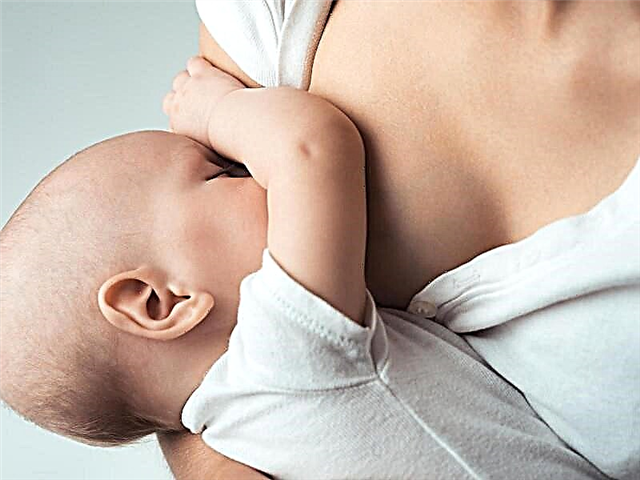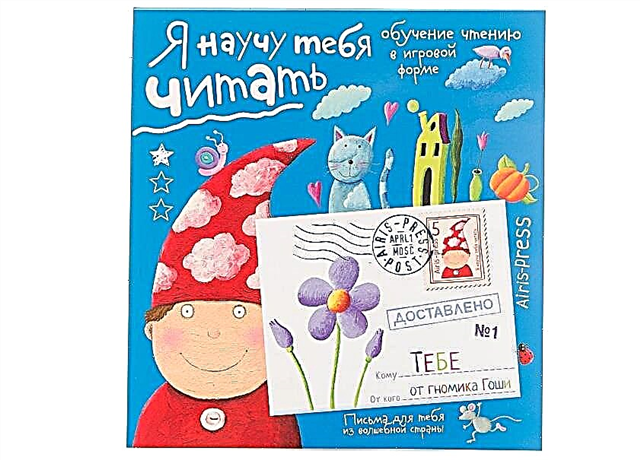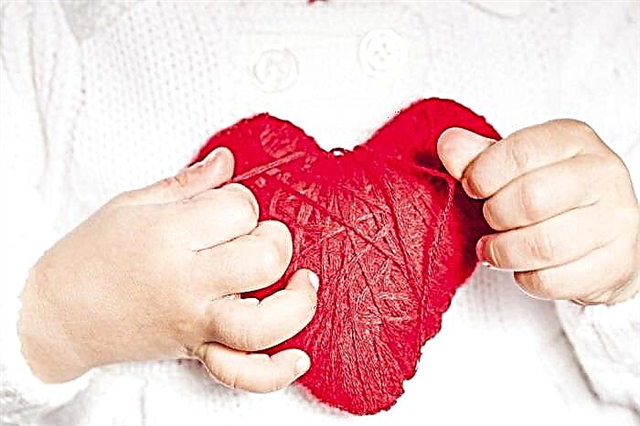There are always many small children waiting in line to see a gastroenterology specialist in a children's medical institution. Why does these babies get gastritis? How to treat gastritis in children? And what measures should be taken to avoid this disease? Gastritis in a child often manifests itself at school age, when the student is in contact with a large number of people, does not always eat right, and experiences stressful stress.
What is gastritis?
The surface inside the stomach is covered with a mucous membrane. And sometimes the mucous membrane is involved in the inflammatory process. This process is called gastritis.
Forms of gastritis
The disease is classified according to various criteria. Medicine today distinguishes between several types of gastritis. The signs and treatments for each type are different. That is why it is necessary to consult a specialist if you suspect a disease.
1. In the course of the disease, children's gastritis is divided into acute and chronic gastritis.
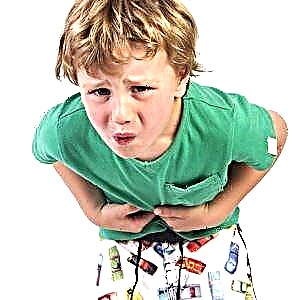 acute gastritis in children. Typical shape. Has severe symptoms. It is provoked by the use of spoiled foods, certain drugs, chemicals or mechanical injury. A bacterial infection cannot be ruled out. As a rule, gastritis always begins with an acute stage. If left untreated, ignored and misinterpreted, the symptoms will lead to a chronic form of the disease;
acute gastritis in children. Typical shape. Has severe symptoms. It is provoked by the use of spoiled foods, certain drugs, chemicals or mechanical injury. A bacterial infection cannot be ruled out. As a rule, gastritis always begins with an acute stage. If left untreated, ignored and misinterpreted, the symptoms will lead to a chronic form of the disease;- chronic gastritis. A form in which the disease is almost asymptomatic. The chronic form is characterized by morphological changes in the mucosa. The ability of cells to regenerate is gradually lost, which is fraught with atrophy. This disrupts the normal structure of hydrochloric acid, pepsin, which immediately affects digestion;
- atrophic gastritis. If the chronic form is not treated for a long time, the disease moves on to the next option. Atrophic gastritis has no sharp manifestations. However, this is quite dangerous. The walls of the stomach are flattened, no longer restored. Soon, the body may even stop digesting food. In childhood, it is rare.
2. Types of acid secretion gastritis:
- gastritis with high acidity;
- gastritis with low acid production;
- gastritis with normal secretion.
Symptoms of gastritis in children
Common to all forms signs of gastritis in a child:
- Pain. Typically, children with gastritis have pain in the upper abdomen (stomach area). The intensity of the pain depends on the degree of inflammation and the pain threshold of the individual child. Therefore, the pain may be mild, not intense, or too severe.
- Heaviness and discomfort in the abdomen. It occurs both as an isolated symptom and in combination with pain.
- Heartburn. It is noted to increase in children with body tilt and physical exertion. The symptom is described as a burning sensation in the upper stomach and behind the chest. Some children may experience a burning sensation all the way down the esophagus to the level of the throat, followed by a sour taste in the mouth.
- Belching and reflux. In this case, the child develops an unpleasant odor in the mouth.
- Poor appetite and refusal to eat.
- Nausea and vomiting. Both of these manifestations either complement each other or appear separately.
- Digestive disorders. Due to gastritis, the first stage of food processing is disrupted. This leads to disturbances at all stages of the digestion process. The child has bloating, diarrhea or constipation, anemia, hypovitaminosis, and other signs of malabsorption of nutrients.
- External changes. Pallor of the skin, tongue with a grayish or whitish coating may indirectly indicate the existence of gastritis with impaired digestion.
The symptoms that characterize the disease are very extensive. But there are specific symptoms that indicate the development of a particular form.

Signs of an acute form of gastritis in a child:
- Abdominal pain. Both severe spasmodic pain and constant aching can be observed.
- Heartburn, sometimes acid reflux after eating.
- Frequent nausea, vomiting. Vomit has a sour odor. Sometimes the child vomits bile.
- Excessive salivation or dry mouth.
- Stool disorder. It manifests itself in the form of constipation or diarrhea.
- Weakness of the body accompanied by dizziness and headache.
- Heavy sweating, fever.
- Decreased blood pressure and tachycardia (rapid heart rate).
Common signs of chronic gastritis
Sometimes signs of this type are poorly expressed. Therefore, pay attention to all symptoms:
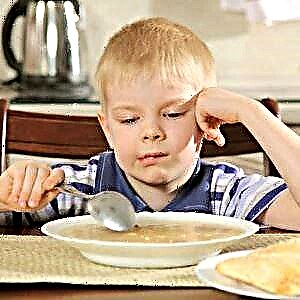 After eating (within 20 minutes) dull pain occurs.
After eating (within 20 minutes) dull pain occurs.- No appetite. After eating, nausea, a feeling of fullness, or bloating are disturbing.
- Eructation accompanied by a putrid odor.
- Bad taste in the mouth.
- Stool disorder.
- Gray coating on the surface of the tongue.
- Anemia.
- Hair becomes brittle, dry nails begin to exfoliate.
- General weakness. This is often combined with drowsiness. Irritability occurs for no reason.
- Weight loss is possible.
The specifics of the manifestation of atrophic gastritis:
- In the foreground, not painful, but dyspeptic syndrome in the form of heaviness in the abdomen, a violation of the digestive process and absorption of nutrients.
- The atrophic form of gastritis disrupts the general condition of the child, causes anemia and hypovitaminosis.
Symptoms for gastritis with high acidity when excess gastric secretion occurs:
- Pain is the main manifestation. It can be triggered by a child's food or physical activity.
- Heartburn and sour belching.
- The condition of the child as a whole is rarely disturbed.
Causes of gastritis in children:
- infectious gastritis;
Not everyone knows that gastritis is a contagious disease. Previously, it was believed that all varieties of this disease are not infectious. As it became known recently, this statement is incorrect. With inflammation or infection in a child's body, an allergic reaction and gastritis can occur.
 In turn, infectious gastritis in children is caused by bacteria or viruses.
In turn, infectious gastritis in children is caused by bacteria or viruses.
Helicobacter pylori (H. pylori). This is a common cause of gastritis. In the occurrence of chronic gastritis, the role of Helicobacter is definitely proven. This microorganism can only exist in the stomach at high acidity.
Therefore, the bacterium is the cause of chronic gastritis only if there is an increased production of gastric juice and hydrochloric acid. Inflammation of Helicobacter pylori genesis with reduced secretory activity of the stomach is impossible.
Viral gastritis in children Is an inflammation of the gastric mucosa caused by viral infections such as cytomegalovirus, herpes, and others.
- improper nutrition of the child;
Ideally, all babies should be fed breast milk. But it happens that the mother cannot breastfeed her baby. And it's good if you can immediately find the right formula for your baby.
The first year of the baby is the most responsible. Frequent change of infant formula, incorrect choice of baby food, untimely or incorrect introduction of additional products - all this leaves an imprint. Given that the children's digestive system is still immature, the stress becomes serious.
Further, at an older age, irregular food intake, refusal to take the first course, snack instead of full nutrition, a diet devoid of nutrients, very hot or, conversely, too cold dishes are a direct path to the development of the disease.
Remember that chocolate, biscuits, and even plain caramel can contribute to gastritis. Children's doctors forbid offering any sweets to children until at least three years of age. This also applies to the liver. An exception is specially prepared for small children.
- stressful situations;
Gastritis often develops due to stress. The stress in a child's life is no less than that of an adult. And sometimes even more.
Among the most common stresses in children are moving to another city, moving to a new educational institution, the appearance of a younger brother or sister, unfavorable interpersonal relationships in kindergarten or school. Especially severe stress for those children whose parents often quarrel with each other.
And don't forget about another important factor. What does the child watch on TV? What games does he play? And how many times a day? Remember that even good cartoons and fairy tales in large quantities have a very serious effect on the children's nervous system.
- food poisoning;
Toxins have a destructive effect on the stomach lining, provoking its inflammation. And inflammation is gastritis.
 Monitor the quality of baby products carefully. Pay attention to the date of manufacture and temperature storage conditions.
Monitor the quality of baby products carefully. Pay attention to the date of manufacture and temperature storage conditions.
- other diseases;
Sometimes gastritis occurs as a result of existing childhood diseases, for example, pancreatitis, hepatitis, cholecystitis.
Therefore, if the crumbs in the body have a source of chronic infection - nephritis, sinusitis, dental caries - the risk of gastritis increases significantly.
In addition, gastritis can be caused by the presence of lamblia and other intestinal worms in the child's body. They severely damage the gastric mucosa, provoking irritation and inflammation.
- medicines;
Gastritis can be caused by many pharmacological agents. Medication often causes severe irritation and inflammation of the stomach lining. It is unlikely that a single use of the drug will lead to gastritis. But the systemic use of certain drugs can provoke inflammation of the stomach lining.
However, in some cases this cannot be avoided. For example, when a child is ill and needs a course of treatment with any aggressive drugs. The doctor should consider the threat of gastritis and try to prevent it. But very often it is the parents who are the culprits of such gastritis.
Often, adults treat the child on their own, giving him certain medications without consulting a doctor. And as a natural result - the development of gastritis. All medications should only be prescribed by a pediatrician.
- genetic factors.
It is known that many diseases tend to be inherited. Gastritis is no exception. If the mother, father or one of the child's closest relatives has gastritis, only the slightest provoking aspect is needed (for example, a small mistake in the diet), and gastritis will immediately declare itself.
Diagnosis of gastritis in children
The child's clinical symptoms and complaints will prompt the doctor or parents to suspect gastritis. Since under the guise of ordinary gastritis, a more dangerous disease of the stomach or other organs can lurk, such a child needs detailed diagnosis and careful observation.
How to determine for sure that a child has gastritis ?:
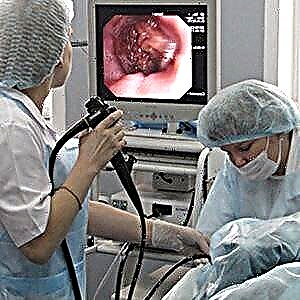 The diagnosis can only be confirmed by a single method. This is fibrogastroduodenoscopy - an endoscopic examination, during which a direct visual examination of the gastric mucosa is performed with an analysis of its condition. But this procedure causes great difficulties and inconveniences of a technical nature, which limit the indications for effective use in pediatric activity. Therefore, it is easier for a child to prescribe a preventive treatment for gastritis and monitor the symptoms. If the signs of the disease do not decrease, there are direct indications for fibrogastroduodenoscopy. After all, the younger the child, the more difficult it is to conduct this study.
The diagnosis can only be confirmed by a single method. This is fibrogastroduodenoscopy - an endoscopic examination, during which a direct visual examination of the gastric mucosa is performed with an analysis of its condition. But this procedure causes great difficulties and inconveniences of a technical nature, which limit the indications for effective use in pediatric activity. Therefore, it is easier for a child to prescribe a preventive treatment for gastritis and monitor the symptoms. If the signs of the disease do not decrease, there are direct indications for fibrogastroduodenoscopy. After all, the younger the child, the more difficult it is to conduct this study.- In confirming the diagnosis of gastritis in children, neither ultrasound nor radiological methods are informative. An ultrasound examination is prescribed to exclude other disorders of the digestive system (chronic pancreatitis, biliary dyskinesia).
- A laboratory study (general blood and urine analysis, diastase level) is performed to determine the severity and complications of gastritis or to detect concomitant disorders in the liver and pancreas.
- Feces are also examined as part of a general analysis and to determine the existence of helminthic invasion.
- A breath test can show that H. pylori is causing the baby's gastritis. The baby is given liquid to drink. Then he breathes into the tube. The amount of carbon dioxide in your breath will be measured. If it is more than normal, the child is infected with Helicobacter.
Treatment of gastritis in children
The methods used to treat gastritis differ depending on the aspects that caused the condition. Therefore, the treatment of chronic gastritis may differ slightly from the treatment of acute gastritis, as the causes are usually different.
Since chronic gastritis is caused by H. pylori bacteria, treatment for the chronic form must be aimed at eradicating the bacteria.
On the other hand, acute gastritis is usually the result of food poisoning or overuse of non-steroidal anti-inflammatory drugs. Most doctors advise taking medications to regulate stomach acids so that symptoms of the disease remain under control.

Medicines that are part of the treatment for gastritis:
- Antacids to neutralize stomach acids.
- Medicines to block acids and stimulate healing.
- Antibiotics to kill H. pylori bacteria.
- Medicines to reduce acid production.
How and how to treat various forms of gastritis in a child?
The treatment regimen for acute gastritis consists of several steps:
- Gastric lavage using a tube or drinking plenty of fluids with further provoking vomiting.
- The use of sorbents (activated carbon, Smecta, Enterosgel).
- Taking antacids (Venter, Almagel, Fosfalugel, Maalox).
- With a prolonged course of the inflammation process, it is recommended to reduce the production of stomach acid (Famotidine, Ranitidine).
- Enzymatic medicines (Creon, Pancreatin).
- Diet food. Gentle foods that do not irritate the stomach lining.
- With severe pain, antispasmodics are indicated (Baralgin, Papaverin, No-shpa).
Treatment of chronic gastritis in children:
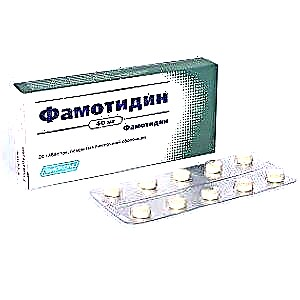 Antisecretory therapy for hyperacid conditions of the stomach (Famotidine, Kvamatet, Ranitidine).
Antisecretory therapy for hyperacid conditions of the stomach (Famotidine, Kvamatet, Ranitidine).Proton pump inhibitors are contraindicated in children. When the chronic form is accompanied by a decrease in juice secretion, there is no need to use these funds.
- Helicobacter pylori treatment. This is carried out with the proven existence of Helicobacteria in the stomach. It means antibacterial medicines (Ornidazole, Metronidazole, Amoxicillin, Clarithromycin), bismuth preparations (De-nol, Vikalin), H2 blockers (Ranitidine, Kvamatet).
- Antacid medicines and gastrocytoprotectors (Maalox, Fosfalugel, Almagel, Gastromax).
- An agent that normalizes the mobility of the stomach and intestines (Motilium, Cerucal).
- Antispasmodics (Riabat, No-shpa).
- Enzymatic preparations (Creon, Mezim, Pancreatin).
- In the atrophic form, iron preparations (Totem, Ferum-lek) and vitamin complexes are recommended.
- Diet therapy, treatment with mineral waters and health improvement in a sanatorium.
Never give your child any medication on their own. Medicinal treatment must be carried out exclusively under the strict supervision of a specialist. And, of course, only by prescription. Therefore, doctors prefer to treat children's gastritis in a hospital setting.
Treatment of gastritis in a child depends on what exactly caused the disease. The success of treatment is possible when the causes are eliminated. Otherwise, the disease will return.
But there are general provisions that are relevant for all cases. If they are not followed, the treatment will not be successful.
Psychological atmosphere
Remember that all types of stress are the most fertile soil for gastritis. Thus, it is necessary to eliminate these stresses. It is necessary to create the most comfortable psychological situation for the child.
Diet for gastritis in children
It is impossible to cure gastritis without changing the child's diet. Talk to your doctor. This will help you choose the perfect menu for your baby.
For any form of children's gastritis, special importance is attached to dietary nutrition. The duration of treatment depends on the severity of the disease and the duration of the recurrence-free course of chronic processes.
Nutrition Tips for Children with Gastritis:
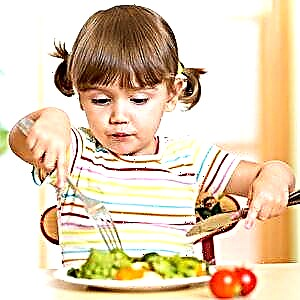 Fractionality, regularity and uniformity of food. If the child eats not 2 - 3 times, but 5 - 6 times a day only at the appointed time, he will accustom the secretory activity of his stomach to absolute self-control. The main thing is to observe that the portions are not very voluminous.
Fractionality, regularity and uniformity of food. If the child eats not 2 - 3 times, but 5 - 6 times a day only at the appointed time, he will accustom the secretory activity of his stomach to absolute self-control. The main thing is to observe that the portions are not very voluminous.- High quality products and gentle on the gastric mucosa. Food must be prepared just before eating. Eliminate fresh white flour bread, raw vegetables, legumes. Also excluded are spicy, smoked, fatty, fried foods with flavors and spices.
- The nature of the child's diet. A healthy diet for gastritis in children means steaming or boiling food. Baked meals are allowed. Food should be soft, mushy, homogeneous, slightly above room temperature.
- Menu structure. What can a child eat with gastritis? The diet for gastritis for children contains mashed potatoes, dietary broths from vegetables and rabbit meat, chicken, beef, as well as oatmeal, rice, buckwheat, steamed cutlets from dietary types of low-fat fish and meat, cottage cheese casseroles. Drinks: cocoa with milk, rather weak teas, especially from herbs, dried fruit compote, honey, yesterday's white flour bread, unsalted crackers.
- It is especially strictly necessary to adhere to the diet in the acutest period of the disease. As the symptoms and signs of inflammation fade away, the diet expands. This is important for replenishing lost energy and nutrients.
How to lose weight with gastritis?
This problem worries many parents, whose child with overweight and chronic gastritis has been restricting food for a long time and cannot throw it off. This question also applies to those who are losing weight with an acute form of gastritis, but after a while they suddenly begin to get fat.
Sample menu for one day:
 Breakfast: steamed omelet with vegetables, tea with milk.
Breakfast: steamed omelet with vegetables, tea with milk.- 2nd breakfast: baked apple.
- Lunch: grated vegetable soup, steamed meatballs with boiled beets, fruit jelly.
- Afternoon snack: broth broth with crackers.
- Dinner: boiled or baked fish without skin, mashed potatoes, a glass of juice or compote.
When a child is diagnosed with gastritis (and it does not matter what form), do not be discouraged or afraid that a full, healthy life is over. It just takes time to rethink dietary guidelines and physical activity levels in the family.
How to prevent gastritis? Prevention of gastritis in children:
- Keep batteries and similar items out of the reach of children. Button batteries are easily swallowed and can cause serious harm. Store all batteries and toxic artifacts out of reach of children. Use child locks to protect children from dangerous objects.
- Don't give your child irritating foods. Foods like oranges and other citrus fruits can cause burning or even pain. Give your baby a variety of healthy foods. Examples: Fruits (non-citrus fruits), vegetables, low-fat dairy products, beans, whole grain breads, lean meats, and fish. Encourage your child to eat small meals and not drink water with meals. Don't let your child eat 3 hours before bed.
- Do not smoke near the child. Nicotine and other substances in tobacco products can worsen symptoms and cause lung damage.
- Help your child relax and reduce stress. Nervous strain can increase the amount of stomach acid and make gastritis more pronounced.
Thus, when a child is diagnosed with gastritis, it is unpleasant, but not fatal. Treatment must be approached comprehensively. In addition to medications, the baby must strictly follow the diet. This will prevent the occurrence of painful attacks and speed up the healing of the mucous membrane.

 acute gastritis in children. Typical shape. Has severe symptoms. It is provoked by the use of spoiled foods, certain drugs, chemicals or mechanical injury. A bacterial infection cannot be ruled out. As a rule, gastritis always begins with an acute stage. If left untreated, ignored and misinterpreted, the symptoms will lead to a chronic form of the disease;
acute gastritis in children. Typical shape. Has severe symptoms. It is provoked by the use of spoiled foods, certain drugs, chemicals or mechanical injury. A bacterial infection cannot be ruled out. As a rule, gastritis always begins with an acute stage. If left untreated, ignored and misinterpreted, the symptoms will lead to a chronic form of the disease; After eating (within 20 minutes) dull pain occurs.
After eating (within 20 minutes) dull pain occurs. The diagnosis can only be confirmed by a single method. This is fibrogastroduodenoscopy - an endoscopic examination, during which a direct visual examination of the gastric mucosa is performed with an analysis of its condition. But this procedure causes great difficulties and inconveniences of a technical nature, which limit the indications for effective use in pediatric activity. Therefore, it is easier for a child to prescribe a preventive treatment for gastritis and monitor the symptoms. If the signs of the disease do not decrease, there are direct indications for fibrogastroduodenoscopy. After all, the younger the child, the more difficult it is to conduct this study.
The diagnosis can only be confirmed by a single method. This is fibrogastroduodenoscopy - an endoscopic examination, during which a direct visual examination of the gastric mucosa is performed with an analysis of its condition. But this procedure causes great difficulties and inconveniences of a technical nature, which limit the indications for effective use in pediatric activity. Therefore, it is easier for a child to prescribe a preventive treatment for gastritis and monitor the symptoms. If the signs of the disease do not decrease, there are direct indications for fibrogastroduodenoscopy. After all, the younger the child, the more difficult it is to conduct this study. Antisecretory therapy for hyperacid conditions of the stomach (Famotidine, Kvamatet, Ranitidine).
Antisecretory therapy for hyperacid conditions of the stomach (Famotidine, Kvamatet, Ranitidine). Fractionality, regularity and uniformity of food. If the child eats not 2 - 3 times, but 5 - 6 times a day only at the appointed time, he will accustom the secretory activity of his stomach to absolute self-control. The main thing is to observe that the portions are not very voluminous.
Fractionality, regularity and uniformity of food. If the child eats not 2 - 3 times, but 5 - 6 times a day only at the appointed time, he will accustom the secretory activity of his stomach to absolute self-control. The main thing is to observe that the portions are not very voluminous. Breakfast: steamed omelet with vegetables, tea with milk.
Breakfast: steamed omelet with vegetables, tea with milk.